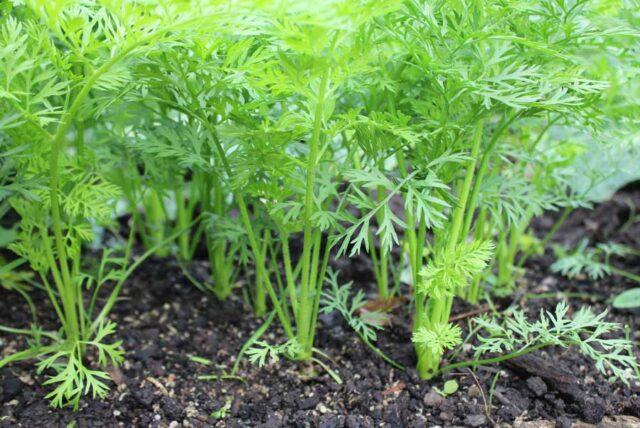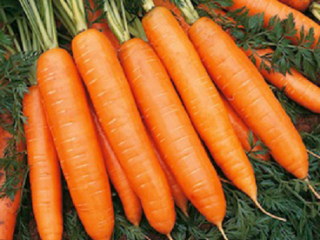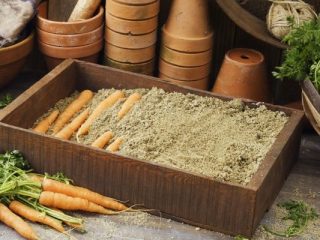Content
Karotel carrots are known to gardeners in many countries. It has long become a classic because it has many advantages. Despite the fact that breeding work does not stand still, and new species appear, the Karotel variety still remains in demand.
History of origin
Karotel carrots (daucus carota subsp. sativus Karotel) were obtained by French breeders at the end of the 20th century. The incentive to create the variety was an international congress of vegetable growers, at which scientists were tasked with improving the quality of carrots. Karotel has become a true standard of the famous root vegetable, combining excellent taste and excellent characteristics. The new variety fully satisfied all the wishes of vegetable growers, and although other varieties were later obtained, Karotel remained one of the best to date. Despite the fact that the species was not included in the State Register, it has become widespread in the Russian Federation when grown on farms and on private plots.

In a greenhouse, Karotel grows especially juicy and sweet
Description of the carrot variety Karotel
The plant forms a powerful rosette of dissected dark green leaves. Its shape is semi-spreading, of medium height. Root vegetables have a shortened cone-shaped or cylindrical shape, with a rounded tip. Carrot length is no more than 14 cm, diameter is up to 8 cm. Average weight is 100-150 g. The pulp and skin are red-orange, the taste is delicate, sweet, juicy. The carotene content per 100 g of root vegetables is 13%, sugar – up to 8%.
Characteristics of Karotel carrots
The variety is mid-early; it will take no more than 110 days for the root crops to reach technical ripeness, after which they are stored. This is especially important in regions with short summers. Karotel carrots are frost-resistant, they can be sown before winter, which results in a harvest several weeks earlier than when planted in spring. The variety is universal, it is consumed fresh, used in cooking and for preservation.

Transportability and keeping quality of Karotel carrots are excellent
Maturation period
Sowing of carrots in central Russia begins in the third ten days of April, when the soil is still quite moist and has warmed up to +10 ⁰C. The first shoots appear after 7-10 days. From this moment until harvesting, 100 to 110 days pass. In regions with a warmer climate, the technical ripeness of root crops occurs ten days earlier than usual. If sowing was done before winter, the harvest ripens by mid-August.
Productivity
You can get large, tasty root vegetables by following several rules:
- Choose the right place.
- Properly prepare the soil.
- Avoid thickening of crops.
- Carry out annual crop rotation.
- Regularly fertilize plants.
- Maintain soil moisture.
With quality care from 1 m2 you can get up to 10 kg of carrots. The average yield of the Karotel variety is 6-8 kg/m2.
Resistance to diseases and pests
Carrots have average resistance to most diseases, but poor agricultural practices and unfavorable weather conditions lead to plants being damaged by rot and brown spot. No less dangerous is the carrot fly, whose larvae gnaw at root crops and above-ground shoots.
Growing regions
Karotel carrots are suitable for cultivation in most regions of the Russian Federation. The variety shows maximum yield in regions with a temperate climate. The plant is cultivated both in open ground and in greenhouse conditions.
Advantages and disadvantages
Karotel carrots differ from other varieties in their lack of tendency to bloom. This is not its only advantage.

The tops of root crops do not turn green because they do not protrude above the soil surface
Pros:
- attractive appearance;
- excellent taste;
- significant content of carotene and sugars;
- fast growth;
- high productivity;
- crack resistance;
- good transportability;
- long-term storage;
- Possibility of sowing before winter.
Minuses:
- average resistance to diseases and carrot fly damage;
- high demands on soil structure.
Features of planting and care
Karotel carrots are grown without seedlings; they are sown directly into the ground. For culture, choose a well-lit place. The best predecessors are legumes, nightshades, and cruciferous vegetables.Before sowing, the area is dug up to the depth of a spade bayonet, and weeds are removed.
To improve the structure and fertility of the soil, rotted compost is added, covering it to a depth of 10-15 cm. Heavy clay soil is diluted with sand. If acidity is increased, add dolomite flour or slaked lime.
On the finished beds, furrows are made 2 cm deep, placing rows at intervals of 20 cm. The seeding rate is 3 g per 1 m2. After the emergence of seedlings, they are thinned out so that the root crops develop normally. The procedure is carried out twice more until there is a gap of at least 5 cm between the plants.
Watering Karotel carrots should be regular so that the soil does not dry out. After each moistening, the soil is loosened.

Changes in humidity lead to a deterioration in the quality of root crops - curling, cracking, and the formation of sprouts.
The first fertilizing is carried out two weeks after emergence. Use a solution of potassium magnesia (1 tsp per bucket of water). The second time, fertilize with a mixture of ammonium nitrate (25 g) and double superphosphate (20 g), taken per 10 liters of water.
Pest and disease control
Karotel carrots have average resistance to diseases and pests. The most dangerous insects for root crops are:
- Carrot fly - at the beginning of the infection, bronze spots form on the tops of the leaves, later the larvae eat through the tunnels in the roots.
Vegetables damaged by carrot flies are not suitable for food.
- Psyllium - damage to the plant is caused by both larvae and adults; severe damage leads to terry foliage and its drying out.
Spraying plants with tobacco infusion helps get rid of psyllids.
- Aphids are dangerous in dry summers; they live on the underside of leaves, damaging them by sucking out the juice.
To combat carrot aphids, they are treated with a mixture of ash and tobacco dust.
The most dangerous diseases for Karotel carrots include:
- Fomoz is a fungal disease that causes rotting of root crops, and gray depressed spots appear on them.
Phomosis develops especially actively during storage of carrots.
- Brown spot - an infection that affects both young seedlings and adult plants. The foliage curls and withers, and brown spots are noticeable on the root crops.
Fungicides are used to treat spotting, and the soil is regularly loosened for prevention purposes.
Harvesting and storage
The readiness of carrots can be judged by the condition of the foliage. If it begins to turn yellow and lies down, it’s time to start harvesting. Mature root vegetables have a bright orange-red color, their size corresponds to the varietal characteristics, and white hairs are visible on the surface.
A warm, sunny day is chosen for harvesting. Root crops are carefully removed from the soil using a fork or shovel, holding the carrots by the tops, the foliage is trimmed and laid out to dry under a canopy. Store in a basement or cellar at a temperature from 0 ⁰С to +5 ⁰С with a humidity of 90% to 95%.
Conclusion
Carrotel carrots have been known to gardeners for a very long time. The secret of its popularity is its unpretentiousness, resistance to disease, and excellent taste. If you follow agricultural practices and careful care, it is not difficult to get a decent harvest and provide yourself with a vitamin product until spring.
Reviews from gardeners about Karotel carrots













